Do Blue Footed Booby Birds Hibernate or Migrate Are Bush Baby Dangerous
Located off the East Declension of Australia is an isle like no other. At 123 kilometres long and 22 kilometres wide, Fraser Island is the largest sand island in the world, meaning that this island is fabricated up mostly of sandy deposits congenital up over a long period of time.
The isle's sand dunes, mangrove forests, perched lakes, and rainforests make it a unique location capable of supporting a diverse range of wild animals.
Farther supporting life on this island is the Cracking Sandy National Park , which is a refuge for the island'southward wildlife.
, which is a refuge for the island'southward wildlife.
Fraser Island has no shortage of wild animals. Mammals, fish, reptiles and amphibians phone call the island home playing an essential function. Almost all forms of life are represented within the isle'southward sandy shores and warm waters, perchance the most impressive is the island's large and various bird population.
7 Of The Most Common Animals On Fraser Isle
1. Over 350 Different Bird Species Are Constitute On Fraser Island
Fraser Island is home to over 350 unlike bird species , including up to twenty different kinds of visiting migratory birds that wing in from places equally far as Siberia.
, including up to twenty different kinds of visiting migratory birds that wing in from places equally far as Siberia.
Birds of prey, mutual birds, and most-extinct species rely on Fraser Island's unique and diverse mural for food, shelter, and raising their immature.
With beautiful songs, unique looks, and in some cases extreme rarity, birds of every category accept been fascinating people on the island for many years.
Birds Of Prey On Fraser Isle
Some of the most captivating birds on Fraser Island are the many birds of prey that discover the island's affluence of life too adept to pass up. In full, eighteen unlike species of raptors have been known to call Fraser Island home. The largest of which is the white-bellied sea eagle.
With a wingspan as big every bit ii.2 meters, this bird truly dominates the landscape. The eagle mainly hunts aquatic animals like fish, snakes, and turtles, but is also known to hunt smaller birds and mammals.
Osprey, a type of hawk that hunts many aquatic animals, which as seen population declines throughout Commonwealth of australia have found safety on Fraser Island.
How Many Types Of Kingfishers Are At that place?
Australia and especially Fraser Island is known for its various population of Kingfishers. Kingfishers are a pocket-size to a medium-sized carnivorous bird.
They accept colourful feather and distinct calls. One of the nearly famous breeds is the kookaburra which enjoys hunting the islands many mice, snakes, insects, and small reptiles.
The extremely territorial bird of prey is famous for its calls which sound very much like children's laughter. The call is so recognizable that it is oftentimes used in film and television for jungle settings.
The kookaburra is not the only unique sounding winged creature that calls Fraser Island abode. Flying through the island's Eucalyptus copse is the small, red-chested mistletoebird. Known for its twelvemonth-round songs, mistletoebirds will mimic other birds and come with their owns songs also.
Then there is the grey shrike thrush, for what this medium-sized bird lacks in vivid colours it more than than makes upwardly for with its songs. The drab shrike thrush is sought later on by bird lovers for its ringing melodies and bright tunes.
Are Hummingbirds Found On Fraser Island?
Also found zipping through the decorated island are the many varieties honeyeaters. These birds are similar to the hummingbirds establish in America. The honeyeaters on Fraser Isle use their long, bent bills to extract the nectar out of the many dissimilar flowers that blossom all over the island.
The wooded wetlands that make upwardly the island are the perfect habitat for honeyeaters. Some varieties that savor the bounty on Fraser Island are the white-cheeked honeyeater, Lewin'due south honeyeater, and the smallest of the species, the scarlet honeyeater.
Just off the shores of Fraser Island, is a testify like no other, birds circling the ocean, pointing their beaks to the water, and diving in. Many of Australia's diving birds notice the water's off Fraser Island to be the ideal place to hunt for eels, fish, and water snakes.
Diving birds like the brown booby, Australian gannet, and cormorant can all be sited diving into the waters every bit they hunt for their casualty. They are likewise known to have a balance on the rocks, trees, and even boats, equally they spread their large wingspans to dry and warm in the sun.
Strolling much closer to shore is where you will notice Fraser Island's variety of wading birds. One of the about noteworthy is the Far Eastern curlew. They migrate yearly to Australia from equally far as Siberia during wintertime. It can exist easily spotted by its long pecker and 110 cm wingspan.
Another interesting wading bird is the pied oystercatcher, despite what its name would suggest, the oystercatcher does not swallow oysters, just rather minor mollusks. The misnamed bird does spend a great deal of fourth dimension wading on the rocky shore where oysters are commonly found though.
Fraser Island's Australian King Parrot
Given Fraser Island's tropical climate, it is a natural identify for parrots to alive. The Australian rex parrot is one of the most easily recognizable. The male person parrots have a read head and breast, while the female shows mostly green.
The birds can be spotted soaring over the tree lines of the rainforests and eucalyptus trees that make upwards parts of the island. For food, the parrots are known to enjoy, fruit, berries, and nuts. In Australia, the parrots are sometimes used equally pets for their bonding nature.
The protected lands of Fraser Isle are too an of import resource for one species of parrot in particular, considering, without them, this species may be extinct. The eastern ground parrot is one of the rarest birds on the island. As the name suggests, this bird lives almost completely on the footing, only taking to the air when it is disturbed.
The dark-green and the yellow bird has been able to proceed a steady population on Fraser Island, fifty-fifty as it becomes extinct in more areas of the mainland. The birds are about active at dawn and dust and are not easily found.
And this simply scratches the surface of the abundance of life on Fraser Island. But like the remainder of Australia, Fraser Isle is a unique place and the birds that have called it abode have developed unique traits as well. Visitors to the island are sure to experience natural sights they will never forget.
2. Dingoes Of Fraser Island Queensland
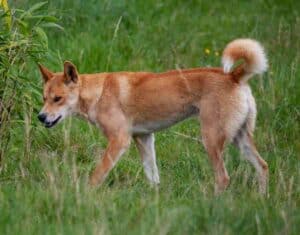
When it comes to wild animals in Commonwealth of australia, nothing is more distinctive than the dingoes . These medium-sized canines are legendary and a huge part of the island'south ecology.
. These medium-sized canines are legendary and a huge part of the island'south ecology.
Although they can exist a pest around Australia, on Fraser Island they are welcomed past tourists. Here are some useful facts that you might like to know virtually these gorgeous animals, for your side by side visit.
Dingo Appearance What Do They Look Similar?
You might think that dingoes look very much like your boilerplate pooch and you would be partially right. Dingoes resemble large wolf-like dogs and are usually a aureate, sandy color.
Frequently, they are born with blackness markings on their backs and tails, which they lose as they get older.
Many dingoes take white markings on their feet, tail-tips and chests. All of these beautiful creatures have pricked up ears and bushy tails.
You lot can hands identify dingoes by their fighting scars and each private dingo has dissimilar tail tips and socks.
Size And Weight Of An Developed Dingo
On average, the adult dingoes on Fraser Island are about 60cm tall, i.2metres long and weight well-nigh 18kg. The canines of the island are slightly larger than some of its other Australian counterparts.
They weigh more than dingoes from Kakadu, the Victorian Highlands and Key Australia.
Although they definitely weigh more other dingoes from effectually Australia, they are certainly not smaller, as well-nigh dingoes around the country are around i.2m long as well. Dingoes on the island are a bit heavier set.
Conservation Of Dingoes
The dingo is a protected species in Queensland, as it is an important native species. The Queensland Parks and Wild fauna Service is legally responsible for the conservation of these wild dog populations.
This tin can be quite surprising, as dingoes are considered a pest in other areas across Australia.
Fraser Island dingoes are somewhat special in their conservation, as they are considered the purest strain of dingo on the eastern Australian seaboard.
It is also possible that they are the purest strain of dingoes nationwide. This is due to the fact that these dingoes have not been able to hybridise and cross breed with other domestic or feral dogs, which are nowadays across mainland populations.
This has made their conservation pregnant, due to the fact that the island dingoes take a uniquely pure genetic makeup.
Food, What Practice Dingoes Eat
When it comes to a dingoes diet, they have a wide range of food that they may await for over the isle. In a report of their diet, it was shown that they prey on as many equally 177 species!
They eat anything from small games to fruits, plants and carrion. As opportunistic hunters, they are able to hunt solitary or as office of a pack, hunting anything they find.
Due to this opportunistic nature, these animals have been considered quite dangerous. Although these animals appear fairly tame and shy, they will absolutely telescopic our your tiffin and have been known to assail humans occasionally.
For this reason, yous are brash to tour Fraser Island in groups to deter potential canine attacks. Dingoes also drink nearly a litre of water each day in the summer months and half a litre in winter.
They may not have to drink pure water, as they can get the h2o they need from their casualty if their liquid content is sufficient.
Dingo Hunting Behaviour
Dingoes ordinarily pursue prey from the rear and kill their casualty by attacking the throat, damaging the trachea. The size of the prey pursued will usually depend on the size of the pack.
Bigger packs of dingoes volition team up to pursue larger prey and lone dingoes will pursue smaller casualty.
The about common big animal to exist predated are large kangaroos and dingoes frazzle they prey through their stamina.
Dingo Numbers On Fraser Island
On the isle, the population of dingoes is considered to be 25-xxx stable dingo packs. These packs consist of 3-12 dingoes each. With around 200 total dingoes left in the wild on Fraser Island
Due to the size of the isle, it is considered one of the all-time places to take a chance of spotting the beast.
Y'all may spot one on the drive around the island, although it is non wise the leave your vehicle if yous see 1! You tin read on our other page and acquire how did the dingoes go to Fraser Island.
Types of Dingoes In Australia
It is really a lesser-known fact that in that location are a few unlike types of dingoes across Australia. The species varies depending on the different climates across the country.
Red, gold dingoes are known as Desert dingoes. Tall dingoes are the rarest type and have light cream fur and northern dingoes are finer is stature and lack a double coat that the other dingoes possess.
Wild Dingoes Lifespan How Long Do They Live?
In the wild dingoes live for an average of iii-5 years and some will alive as long every bit 7-8 years.
The oldest dingoes recorded have been living up to ten years and in captivity, they can survive as long every bit 14-sixteen years. The oldest dingo lived up to 20 years one-time.
How Practice Dingoes Communicat?
Dingoes are non likewise dissimilar from their domestic counterpoints when it comes to communication.
They bawl and cry similar domestic dogs, although dingoes are known the howl and whimper more. A dingo's bark is brusk and monosyllabic.
Information technology is rarely used and only makes upwardly almost v% of the sounds they make. The dingo's bawl is distinctive from a wolf. When a dingo barks it is a warning bespeak to other animals or dingoes.
Nocturnal Behaviour Of Dingoes
Dingoes are nocturnal in warmer regions, with their activity peaking between sunset and dawn. Their periods of activity are mostly short, at effectually one hour and they remainder in between these periods.
They have two main types of motility: a searching movement associated with hunting and an exploratory movement which may be used to communicate with other dogs.
Dingoes are not afraid to move freely at nighttime through urban areas besides.
Overall, these distinctive animals are a cornerstone of Australian wild animals and are a must-see at Fraser Island.
With enough intendance, you might be able to spot i on your next visit! Non only are these beautiful creatures of import from an ecological perspective, but they are a neat example of the native wildlife nowadays in Australia.
Conservation of these animals is important on the island due to their genetic purity, compared to the mainland.
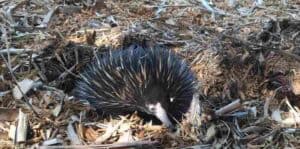
Short-beaked echidnas are common residents on Fraser Island, Australia. They live in the hollow logs, brush, burrows, and caves of this beautiful island.
These reclusive picayune mammals take interesting characteristics, habits, diets, and other fascinating qualities.
Short-beaked echidnas from Fraser Island, Commonwealth of australia have been called by many names because they have such an interesting combination of physical characteristics.
from Fraser Island, Commonwealth of australia have been called by many names because they have such an interesting combination of physical characteristics.
They take pointy spines similar a porcupine, a pouch like a kangaroo, fur similar a mammal, a snout similar a bird pecker, and lay soft eggs similar a cadger.
All of these interesting and various characteristics allow the echidnas from Fraser Island, Australia to thrive in their environs.
Echidnas Trunk What Does Information technology Look Like?
Echidnas are pocket-sized mammals, typically 30-forty cm in length (including the tail) and weight 4-6 pounds. Their bodies are covered with fibroid brown fur and take two-inch-long spines (adaptive hairs) which resemble those of a porcupine.
The fur between the spines provides insulation from cold weather condition and spines provide protection from predators.
The stout torso is muscular and contoured to let it to wedge itself into pocket-size places, such as nether logs and effectually tree roots to search for food or escape predators. Echidnas have large, stiff claws which enable them to break open up rotted logs, dig out ant hills for food, and to apace dig into the ground to hibernate or for shelter.
The dorsum claws are long and curved backwards which help them to dig rapidly and to groom betwixt their spines.
Echidnas take short, slender snouts which are three inches long and resemble an anteater. Their snouts serve as both their nose and mouth because they discover and take hold of their prey with it.
Their noses are electroreceptive (sensory cells) which enable them to feel vibrations and notice their prey.
Echidnas don't announced to have ears considering they don't have external ear structures. They do accept ear holes or small slits on either side of their heads.
The ear openings tin't exist seen because they are covered with spines which motility to capture sounds. Echidnas have excellent hearing and are sensitive to low-frequency sounds.
The echidna's optical organisation is a combination of features from mammals and reptiles. The eyes are similar to primates because they can see distances conspicuously due to the apartment lens and are able to change focus.
Their optics are reptilian-like because their eyeball structure is similar to that of reptiles with a difficult corneal surface.
Studies have determined that they can distinguish between horizontal and vertical stripes and black and white.
Eyesight is not crucial to an echidna's survival; blind echidnas have been known to live well without sight.
The short-beaked echidnas from Fraser Island, Australia take distinctive behaviours linked to their habitant, activities, diet, reproductive and survival patterns.
Echidnas are reclusive and like to alive alone in cloak-and-dagger burrows, rock crevices, or caves except when rearing young. Considering they don't tolerate extreme temperatures, they gravitate towards places that are cool.
They do not take fixed shelters or territories, only usually alive in a range area of about ane foursquare mile or more.
They willingly share home range areas or shelters when at that place are not enough for each beast.
They volition live in areas where there is a plentiful supply of food, but they can compensate for food storages by going into hibernation for up to three weeks.
Echidnas are typically active in the daytime during cool weather and reverse their habits during the summer when they are agile during the evening. This is because echidnas do non have sweat glands and do not "pant" to remain cool.
Body temperatures in a higher place 93 degrees can be fatal for them. If they live in an surface area with bachelor h2o, they will swim to proceed cool and groom themselves.
Echidnas hibernate and tin can lower their trunk temperature, metabolism, eye and breathing rates during this process. Females start hibernation betwixt February and April and return to total activeness in July and August.
The males cease their hibernation period earlier in mid-June before the mating season begins.
Echidnas Diet, What Do They Consume?
Echidna'southward diet consists mainly of ants and termites and they have an interesting way of catching and eating their food. At the end of their long snouts, they have tiny mouths and toothless jaws.
They use their long (6 inches) sticky tongues to catch their prey and the powerful pads in their jaws to grind the food before swallowing.
The natural language can move in and out of the snout 100 times a infinitesimal, so half-dozen-pound echidnas can eat about vii ounces of termites in ten minutes.
They get water from their food or from licking morn dew from flora. Echidnas are crepuscular feeders (they eat early in the morning and at dusk).
Echidnas are egg-laying mammals. Twenty-two days after mating, the female lays a single, soft-shelled, egg into a pouch in her belly. The egg is about the size of a dime and has a leathery consistency.
When the egg hatches in 10 days, a babe echidna, chosen a "puggle", is born.
The puggle (the size of a jelly bean) sucks milk from the pores of two milk patches and remains in the pouch for 45-55 days.
After the puggle develops spines, the mother places it in a small burrow and leaves it there for near 7 months-visiting every five days to feed it.
A puggle will stay in the burrow for up to a year before leaving.
Echidnas from Fraser Island, Commonwealth of australia, are timid animals and when threatened volition try to bury themselves in the basis or curl up into a ball and deter the enemy with their spines.
Also, males take small spurs on their rear legs that can be used to deter predators.
Various physiological adaptations assistance echidnas to survive. Because echidnas are burrowing animals, they tin tolerate high levels of carbon dioxide in the footing; low oxygen during bush fires; and can swim underwater while lowering their middle rate during a flash flood.
Echidnas have a long survival rate. 1 echidna was recorded to accept lived to be 45 years old in the wild and one in captivity lived to exist 5o years old.
4. Lace Monitor Of Fraser Island Queensland
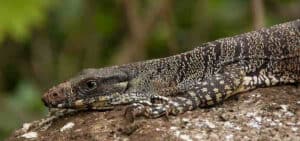
If y'all are going to exist visiting Fraser Island, Queensland, New Southward Wales, South Australia or the Commonwealth of australia Upper-case letter Territory during the leap or summer, you are likely to run beyond the second-largest Australian monitor, the lace monitor .
.
The lace monitor is native to Australia and is often referred to every bit goannas, tree goanna or lacy.
About The Lace Monitor
These lizards, which are relatives of the Komodo Dragon, grow up to 2 yard (7 ft) long and weigh up to 14 kg (30lb). Newly-hatched lace monitors are roughly 12 in long and weigh about an ounce.
The lace monitor is the only lizard with a forked natural language, like to that of a snake, which is used to subdue small-scale prey.
Their tail is half their body length and is very powerful. Being whipped by the tail of a lace monitor tin pause a finger or manus, knockdown minor animals or children.
The lace monitor is well-nigh active during the summer months. This is considering they are solar-powered reptiles in need of the warm conditions and sunlight to provide the necessary heat for them to motion around.
Practise Lace Monitors Harm Humans?
The lace monitor does not pose a threat to humans, however, they volition secrete a balmy venom as a defense mechanism against predators. The venom is often compared to that of a rattlesnake, yet not equally toxic.
This can be harmful to infants or small animals, however, this is not enough venom to inflict on big predators or adults. Precautions are brash if you see these monitors in the wild considering they do carry large amounts of bacteria in their mouth, which volition cause an infection if y'all are bitten by i.
This type of occurrence is rare since lace monitors tend to run in the reverse management when humans are nearby.
Where Are Lace Monitors Establish?
The lace monitor is the most commonly constitute reptile on Fraser Island. You volition find these lizards roaming about in picnic areas or climbing one of the trees. They are known to exist excellent swimmers and tree climbers, and then you may notice them in the water looking for prey, such as fish, frogs, shrimp or crabs.
The lace monitor has a preference to inhabit semi-boiling to humid forest areas, river basins and in hollows of trees. In fact, they use tree hollows, rocks or fallen trees equally a shelter during the colder months.
So if you are travelling effectually the bushland areas of Fraser Isle in the colder months, be conscientious of where you pace.
Lace Monitors Reproduction
Effectually 4 to 5 years of historic period, the lace monitor will reach sexual maturity. The convenance season is between September and December, and the male lizards are known to engage in gainsay to exude their potency over a female.
Female lace monitors will lay eggs within 4 to half dozen weeks after mating. They tend to lay eggs around termite mounds or nests for protection against predators.
The termites will seal the entry hole, which helps provide warmth to the eggs which aid with the incubation flow.
Libation weather condition prolongs the fourth dimension for the hatching to occur.
Young monitors come with an egg tooth that is used to cutting their way out of the egg. The mothers remain close to the mounds or return to the nests, in club to assist the young lizards dig their mode to the exterior world.
The average lifespan of the lace monitor is 10-15 years, however, they have been known to alive up to twoscore years in captivity.
Type's Of Lace Monitors In The Wild
There are 2 forms of lace monitors the principal type is typically a ho-hum grey to bluish-black, with foam-coloured spots scattered all over the torso. The 2d form which is known as the bells course, or bells phase lace monitor is common in the dry inland areas throughout the e coast and central regions.
The bells form lace monitor features a base of operations colour of yellow or a yellow-brownish, with black bands from the shoulders to the tail and a blackhead. As the lace monitor ages, the colour of the bands begins to fade, leaving the scattered yellow spots.
How Do Lace Monitors Consume?
The lace monitor is a carnivore, known to eat insects, birds, reptiles, mammals, and eggs. If the lace monitor can catch it, it will be eaten. The lace monitor has likewise been known to eat sheep, cattle and are highly attracted to rotting meat.
They take sensors similar to that of a ophidian, where they can sniff out prey and set on fifty-fifty if the prey is hiding.
This species of monitors are said to banquet on more bird eggs than whatsoever other species. As practiced tree climbers, the lace monitor will climb trees and casualty on bird eggs.
You lot can discover them around campgrounds and picnic areas picking up nutrient scraps or rummaging through rubbish bins for nutrient. The lace monitors will employ their teeth and front end claws to tear food into pieces, or they will swallow the nutrient whole.
These lizards are also known to gorge on dead carcasses or roadkill and go weeks without eating.
What Or Who Hunts Lace Monitors?
The lace monitors are preyed upon by dingoes and birds of prey and were often hunted by aboriginal people. The eggs were collected from sand and riverbanks and considered a delicatessen among the Wiradjuri people.
The fat from the lace monitors was considered highly valuable for medicinal and ceremonial use by the Aboriginal people.
Habitat Threats To The Lace Monitor
The lace monitors are not seen equally endangered animals, nevertheless, in certain parts around Australia, their normal habitats are threatened.
This is due to the clearing of the land and elimination or removal of termite mounds and fallen copse.
Other threats or causes of decline to the lace monitors tin can be attributed to pikestaff toads and certain predators that prey on young lace monitors.
Conclusion
When yous travel to Fraser Isle, you are bound to notice these lace monitors hanging around trees and picnic areas. Although they are not known to intentionally assail humans, they will strike back if they feel threatened.
Then, if you practice run into 1 on the island make sure you don't try to grab or feed it, equally tempting every bit it is.
5. Sea Turtles Of Fraser Island Queensland
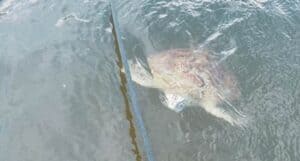
Fraser Isle, originally named G'gari meaning cute identify, is dwelling to many unlike animals. It is a protected surface area, supporting the wildlife so it can survive and thrive.
The oceans and reefs surrounding this island and the Queensland coast are abode to two species of Sea Turtles , the dark-green bounding main turtle, and the loggerhead sea turtle.
, the dark-green bounding main turtle, and the loggerhead sea turtle.
Facts About Sea Turtles Around the World:
There are 7 species of ocean turtles in oceans around the globe.
Sea turtles spend most of their lives in the h2o.
They travel cracking distances from their nesting areas throughout their life but return to these areas for mating and nesting seasons.
Ocean turtles nest in the sand on beaches, 1 of the few times they come out of the water, and only female sea turtles nest.
Female body of water turtles lay their eggs on the same nesting beach.
The nesting area is the body of water surrounding the nesting beach where the female person lays her eggs.
Bounding main turtles are endangered and are heavily influenced by humans.
Merely ane in one chiliad hatchlings survive to adulthood. This number has been on the decline due to human interference in nesting and hatching.
Fraser Island and the coast of Queensland, Australia contains many nesting grounds for sea turtles and are protected by wildlife foundations.
The groups who protect these beaches work to ensure the safety of sea turtle eggs and hatchlings throughout the nesting and hatching procedure.
Body of water turtles are important to the ecosystem of Fraser Island as they maintain the coral reefs and seagrass fields surrounding the isle and they balance out the food chain shared by other species who call the isle habitation.
Green Sea Turtles Of Fraser Island
The Great Coral Reef is one of the largest feeding grounds for green sea turtles in the world. Because of this many female person green sea turtles use nearby beaches as nesting grounds, including much of the coast of Fraser Island.
Green sea turtles are mostly olive green on their tops, with touches of black and brown. Their bottoms are white or off white in color. They have tall, domed shells that can abound up to a meter in their lifetime.
Younger green sea turtles can be carnivorous, but developed green body of water turtles eat mainly seagrass, mangrove fruits, and seaweeds.
They migrate between feeding grounds found in coral reefs and seagrass pastures. These feeding grounds also serve as nesting areas for nearby nesting beaches.
Between nesting seasons green sea turtles drift to and remain in certain nesting areas. They return to the neat barrier reef and Fraser Isle as their migration pattern dictates.
and Fraser Isle as their migration pattern dictates.
Dark-green sea turtles nest from November through January, coming ashore at night to lay eggs. Hatchlings surface from their nests from Jan through March and head out to bounding main.
They are shiny black on their tops and white on their bottoms at birth.
Female light-green bounding main turtles reach maturity at thirty to 40 years of historic period and nest every two to eight years, laying approximately 115 eggs per nest and coming ashore to nest up to five times while in the season.
What Are Loggerhead Sea Turtles?
A smaller portion of loggerhead body of water turtles uses Fraser Island as a nesting area. Loggerhead sea turtles have less structure in their migrations and travel farther than green sea turtles between seasons.
The loggerhead sea turtle is brown on its top and tin be speckled. Its bottom can range from yellowish to white. Their shell is heart-shaped and can abound to 1.5 meters in length.
Loggerhead ocean turtles are mostly carnivorous, although they can consume seagrass. Their diet consists of jellyfish, shellfish, crabs, and sea urchins.
Loggerhead hatchlings spend their first 16 years of life abroad from their nesting area at sea before returning to the feeding grounds of their nesting beach.
Most loggerhead body of water turtle nesting grounds on Fraser Island are at the top of the island. They nest hear at night from December to February. Hatching occurs from Dec to April.
Loggerhead ocean turtle hatchlings are ruby-dark-brown or blackness in colour.
Turtle Nesting And Hatching on Fraser Isle
Both the loggerhead body of water turtle and the green bounding main turtle emerge to nest at night. It tin can take a female person ocean turtle up to an 60 minutes to travel from the ocean to their nesting spot, and they are easily deterred by noise, movement, and low-cal.
Some female sea turtles volition emerge and return to the ocean several times earlier beginning the next step in the process.
Once a female sea turtle reaches her nesting location she clears abroad sand to create the nest with her front and dorsum flippers.
She then digs the egg chamber and begins the process of laying eggs which tin can accept anywhere from 10 to twenty minutes.
When she is finished she covers the egg sleeping accommodation and returns to the ocean. The whole process tin accept several hours without disturbance.
Several predators on the isle, dingos and goannas, will dig up and consume the turtle eggs, and so, to protect the population, wild animals organizations will relocate nests and protect the eggs until the hatching flavor begins.
When it is fourth dimension the batch of hatchlings all interruption their eggs within hours of each other but usually require a day to orient themselves and brainstorm the climb to the surface. Excavation through the sand tin accept the whole group several days.
They usually emerge from the nest at nighttime and make their way to the bounding main together.
Ecology cues are essential to hatchlings as they try to observe the body of water, Interference with this process even after they have entered the water can increase the hatchling's risk of death.
Disturbances, particularly light interference, can be detrimental to the progress of bounding main turtle hatchlings earlier they fifty-fifty reach the water.
Where Can You Find Fraser Isle Sea Turtles?
Frasier Island is surrounded past modest beaches, any of which tin can be used for nesting. Turtles nest all along these beaches, but there are hotspots where they are more likely to be constitute, whether nesting or not.
If you're looking for an opportunity to meet sea turtles in their watery environment at that place are tours that will accept yous out into the water along Rainbow Beach and the west coast of Fraser Island where you can often observe turtles swimming around.
If you're interested in seeing turtles nesting and hatching Orchid Beach, Rooney Signal, and the Sandy Greatcoat Conservation Park are common nesting beaches all located on the northern half of the island where nesting is more common. There'south a good take chances you lot tin can find a tour guide to pb your expedition and aid you avoid disturbing the turtles.
If you proceed your own, go along in mind how timid these creatures are and retrieve not to interfere with the procedure with movements, sounds or lights.
Fraser Island is a haven for wildlife. Simply exploring can land you amongst a wide multifariousness of flora and animate being you may never have seen before. Explore the beaches and proceed your eyes out for sea turtles!
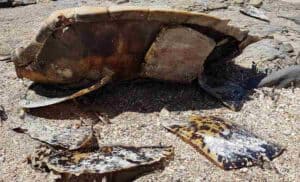
vi. Snakes Found On Fraser Island Queensland
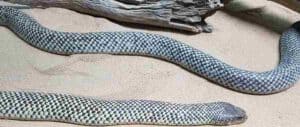
Near of the isle is composed of volcanic bedrocks that accumulate sand forming dunes. Other than the dunes, Fraser Isle is abode to thick eucalyptus woodland, mangrove forests, swamps, and littoral vegetation.
Thanks to the corking forestation, the island is a habitat for different species of animals. Here, you lot'll notice a description of the dissimilar snake types found on the isle and what they eat.
types found on the isle and what they eat.
Does Fraser Island Accept Snakes?
Does Fraser Island have snakes? Yep, it does have about xviii species of snakes inhabit the island. Experts say that a third of these snake species are venomous. It is a common phenomenon to find snakes washed to the shores of the beach.
In other instances, the snakes bite those they encounter. Ideally, snakes sense vibrations from the basis. Since the isle is sandy, the snakes receive the vibration signals of oncoming motion fast enough.
When snakes observe approaching intrusion, they retaliate past hiding. Here are some of the different types of snakes on Fraser and what they consume.
Types Of Snakes On Fraser Isle And What Practise They Consume
Fraser Island Carpet Python
The carpet python is a mutual pet in about households in Commonwealth of australia. The Morelia spilota variegate is the main sub-species constitute in Fraser Island.
You can distinguish carpeting python from any other snake because of its brownish with some grey or black spots.
The snake grows to a maximum length of about 2m and oftentimes kills its prey through constriction. The python is however non-venomous.
Most carpeting pythons alive in trees and hunt during the dark. You can also spot the serpent basking in the sun during the twenty-four hour period.
The main diet for carpeting pythons include bats, small mammals such as rats, birds, lizards, and food scraps. These species of snakes have a powerful sense of odour and accept flexible jaws to catch even larger prey such as possums.
Yous may too notice carpet pythons in households every bit they search for food scraps. It is therefore common to hear slithering sounds in your ceilings.
Are Brown Tree Snake'due south Found On Fraser Island?
The snake is brown and a foam belly. Ane singled-out feature of the ophidian is that information technology has a broad head with cat-like narrow pupils and a slim neck. The vertical pupils aid the ophidian in its hunting escapades and nighttime vision.
The snake is also unique in that it has rear fangs.
The snakes prefer living in rainforests, woodlands, on rock crevices, hollow tree trunks, and even on rafters in houses. The brown tree snake grows to a length of 2 meters.
This species of snakes climb well on walls, rocks, and copse. In some areas, the snake has acquired power shortages after climbing on electricity wires. The brown tree serpent feeds on birds, small-scale mammals, bats, and eggs.
Immature brown snakes adopt feeding on pocket-sized lizards.
The snake is non-venomous but is aggressive if threatened. In times of danger, the snake tends to scroll in multiple loops as a defence.
Is A Green Tree Serpent Agile At Day Time?
This snake has a slim torso and big eyes. Normally, the snake is green in color just easily camouflages to announced dark on the top and calorie-free on the bottom.
The scales of the snake have a blueish tan.
The species is active during the 24-hour interval; hence, it's common to bump into them in our backyards. The light-green tree ophidian is a great climber but slides if placed on polish basis.
The snakes are harmless because they don't take fangs and venom. Instead, if the ophidian senses danger, it raises its head, inflates its body, and produces an awful odor from its anal glands.
The ophidian loves sunbathing on rocks, trees, and rooftops. It besides has a good sense of aroma as information technology slithers on the footing trying to find food.
Its favourite dished include eggs, birds, lizards, mice, lizards, and frogs. The serpent isn't shy and looks into your optics if yous come across information technology.
Notwithstanding, it prefers staying on trees where it can fifty-fifty look like a tree branch. At night, the reptile hides on hollow trees and rock crevices.
Death Adder The Most Venomous Snake Institute On Fraser Island
This is the virtually venomous snake found on Fraser Isle. Although not mutual, it exists in a light colour to camouflage on the sandy isle. Yet, in other regions specially in the mainland, the expiry adder is dark in color.
The ophidian has a thick body, with a wide and triangular head. The snake has band strips that differ in colour depending on its dwelling. Hence, it is known for its excellent camouflage.
Unlike other snakes, the expiry adder doesn't lay eggs but instead lays live snakes. In one cycle, the female snake reproduces between 3-xxx young ones. The snake mainly feeds on lizards, birds, and other pocket-sized mammals.
Death adder poses a significant threat to man life considering it has unique hunting techniques. Usually, the snake hides in bushes with leaves with its tail coiled shut to its caput. The tail often makes some twitching movements to attract prey.
The snake can wait for days for its prey to come up past, and information technology doesn't move in search of food. The cane toads pose a threat to these snakes due to the venom that kills them.
Eastern Brown Serpent Of Fraser Island
The ophidian is slender without any articulate stardom between its caput and the rest of the trunk. An developed snake grows to a length of 2 meters.
The snake is mutual in Fraser Island and the broader Australia accounting for threescore per cent of all snake deaths in the country.
The venom from the snake is neurotoxic hence paralyzing the prey.
The snake has become common in forests and households because of the availability of its nutrient. The ophidian mainly feeds on mice, lizards, birds, and other small mammals.
The snake differs in colour but is generally dark-brown, with some having black stripes. The belly of the snake oftentimes appears cream to yellowish.
Fresh H2o Keelback
Just as the name suggests, the serpent lives in water. The serpent is brown to dark in color with some blackness stripes. The snake has crude scales that often form ridges exposing pale skin.
The underside of the snake is cream with a tinge of pink to orangish.
You can detect snakes in water bodies, heaths, forests, and suburban gardens. The snake is active both daytime and at night. Amazingly, the snake lives well on the footing and can as well climb well.
The snake mainly feeds on small pikestaff toads, other frogs, reptile eggs, and other small mammals.
This species of snakes are mutual along the shores of the waters on the isle. Still, they pose no threat to human life because they're non-venomous.
Conclusion
Fraser Isle has about 18 species of snakes. About a third of these snakes are venomous and dangerous to man life. Some of the snakes establish include death adder, green tree snake, brownish tree snake, freshwater keelback, eastern brownish serpent, and the carpeting python.
If yous encounter any snakes as yous explore the isle, information technology'south advisable to move away and let experts handle them.
vii. Fresh H2o Turtles Found on Fraser Island Qld
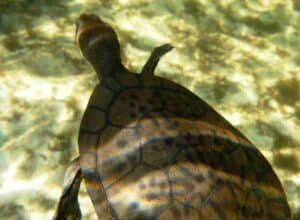
The freshwater turtle is a cute creature which many people would love to come across in the wild. On Fraser Isle, Australia yous have the take a chance to brand this dream a reality and get up close and personal with the freshwater turtles that live here.
is a cute creature which many people would love to come across in the wild. On Fraser Isle, Australia yous have the take a chance to brand this dream a reality and get up close and personal with the freshwater turtles that live here.
These turtles are one of the things that Fraser Isle is known for, Commonwealth of australia as a whole is famed for its diverse and often indigenous wild fauna and when visiting the land, one of the favourite things to exercise is to interact with it.
In this commodity, we are going to be taking a look at the freshwater turtles of Fraser Island in a much more detailed way, giving y'all all the information you need to know well-nigh these stunning creatures before your visit to the isle.
We will also be revealing the best place to guarantee a sighting of a freshwater turtle whilst on Fraser Isle.
A Bit Of Freshwater Turtle Background
The freshwater turtles, like those that tin exist found on Fraser Isle, are a group of animals that can be traced back over 200 million years and in that location are 24 dissimilar species of freshwater turtle found in the country.
These turtles require water just can ofttimes exist seen sunning themselves during the day in order to dry out off a little, this might be the perfect time to snap a shot of 1 of them.
Australian freshwater turtle has extremely powerful back legs which they employ to swim and many tin be identified by their long, snake-like necks. Equally the proper noun suggests, this type of turtle lives in freshwater sources such as rivers and streams and cannot be found in the ocean.
One of the virtually interesting facts most the freshwater turtle is the way that it retreats into its shell.
Nearly people who look that they would merely pull back to become inside the trounce just the freshwater turtle is besides lovingly chosen the 'side neck turtle' due to the fact that information technology turns its caput to one side when heading back into its shell.
When it is fourth dimension to breed, females can lay up to 25 eggs at any one fourth dimension. One time the hatchlings come out of the eggs, they can take as long every bit 10 years to reach full maturity, that existence said each ane can live to exist around 5o years old!
During the flavour where the turtles are laying their eggs, at that place are conservation programs in operation on Fraser Island which help to ensure that the eggs are protected.
What Types Of Turtle Can Be Found On Fraser Island?
As we mentioned, Commonwealth of australia is home to effectually 24 types of freshwater turtle, but which ones are you likely to come beyond when visiting Fraser Island?
There are iii species of freshwater turtle which are most commonly found on Fraser Island, these are;
- The short-necked turtle.
- The Eastern ophidian-necked turtle.
- The broad shelled river turtle.
What Do The Freshwater Turtles Of Fraser Island Consume?
It may come as a surprise to learn that the diet of the freshwater turtle is pretty varied.
Oftentimes, they will eat whatever they can get their easily on, inside reason because they are highly adjustable creatures who will make the most of the surroundings that they live in.
There are some turtles which eat meat exclusively and others which are vegetarians only for the most part, they are omnivores who indulge in both meat and veg. Commonly, their natural diet includes many of the post-obit foods;
- Insects
- Water weeds
- Plants (all water-based equally turtles cannot feed on dry land.)
- Small freshwater fish
- Tadpoles
- Snails
- Mussels
- Yabbies
- Worms
- They may sometimes feed on an animal which has deceased although they adopt to go after live prey when eating meat.
Where To Find Turtles On Fraser Island
There are many places on Fraser Isle which are teeming with freshwater turtle life, some of them are major tourist spots.
In this section, we want to testify you some of the very best places to go turtle spotting, near of which volition almost guarantee that you can encounter and greet a freshwater turtle.
Our first stop is a place called Lake McKenzie which comes highly recommended for anyone wishing to say hello to a freshwater turtle.
This stunning, articulate lake can exist found in the Great Sandy National Park and is one of the near visited natural places on the whole of Fraser Island.
and is one of the near visited natural places on the whole of Fraser Island.
Not only is at that place a high probability of seeing many freshwater turtles here simply there are also a whole wealth of other activities to accept office in. The area is favoured by hikers and you fifty-fifty have the option to camp nearby.
Or how about taking a swim in this rainwater created lake which the turtles seem to love!
Lake Allom is one of the most popular places to catch a glimpse of a freshwater turtle on Fraser Island. Turtle spotters are invited to stand up on the viewing platform here which gives a great view of everything that the turtles might be getting upward to.
It is worth noting that those visiting the lake are absolutely forbidden from feeding the turtles every bit this is not beneficial to the ecosystem in which they live.
If those two idyllic lakes were not plenty, how nigh visiting Lake Wabby which is a gorgeous lake surrounded by rich rain-forests and sand dunes, making information technology a turtle paradise.
If you are looking for something a piddling different, you could try Eli Creek on the east of Fraser Island which is well known for the huge corporeality of turtles that live here and is a great spot for seeing them in their natural habitat.
Many people too choose to swim with the turtles and in that location accept been enough of reviews that put this activeness above and beyond the experience of pond with dolphins!
Conclusion
If you are looking for a truly inspirational experience and one that really brings you back to nature and so taking a trip to Fraser Island and discovering one of its most well-loved forms of wildlife-the freshwater turtle, will be well worth it.
These amazing and beautiful creatures alive in glorious surroundings that tin exist appreciated and loved by turtles and humans alike.
Resource Links To Products We Use And Recommend
Source: https://www.discoverherveybay.com/fraser-island-animals/
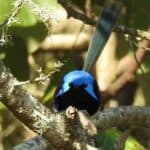
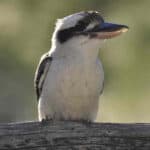
0 Response to "Do Blue Footed Booby Birds Hibernate or Migrate Are Bush Baby Dangerous"
Post a Comment